- Clone
- RMP1-14 (See other available formats)
- Regulatory Status
- RUO
- Other Names
- Programmed Death-1, CD279, PD 1, PDCD1
- Isotype
- Rat IgG2a, κ
- Ave. Rating
- Submit a Review
- Product Citations
- publications

-

Con A-stimulated (3 days) C57BL/6 splenocytes were stained with Ultra-LEAF™ purified RMP1-14 (filled histogram) or purified rat IgG2a, κ isotype control (open histogram) followed by anti-rat IgG PE.
Select size of product is eligible for a 40% discount! Promotion valid until December 31, 2024. Exclusions apply. To view full promotion terms and conditions or to contact your local BioLegend representative to receive a quote, visit our webpage.
CD279 is a 50-55 kD immunoglobulin superfamily member, also known as programmed death-1 (PD-1). PD-1 is expressed on a subset of CD4-CD8- thymocytes, and on activated T and B cells. PD-1 is thought to be involved in lymphocyte clonal selection and peripheral tolerance. The PD-1 ligands, PD-L1 (also known as B7-H1) and PD-L2 (B7-DC), are members of the B7 immunoglobulin superfamily. The RMP1-14 antibody has been reported to block the binding of PD-1 to its ligands (B7-H1 and B7-DC) and to inhibit T cell proliferation and cytokine production costimulated by macrophages (but not by dendritic cells and B cells).
Product DetailsProduct Details
- Verified Reactivity
- Mouse
- Antibody Type
- Monoclonal
- Host Species
- Rat
- Immunogen
- Mouse PD-1 transfected BHK cells
- Formulation
- 0.2 µm filtered in phosphate-buffered solution, pH 7.2, containing no preservative.
- Endotoxin Level
- Less than 0.01 EU/µg of the protein (< 0.001 ng/µg of the protein) as determined by the LAL test.
- Preparation
- The Ultra-LEAF™ (Low Endotoxin, Azide-Free) antibody was purified by affinity chromatography.
- Concentration
- The antibody is bottled at the concentration indicated on the vial, typically between 2 mg/mL and 3 mg/mL. Older lots may have also been bottled at 1 mg/mL. To obtain lot-specific concentration and expiration, please enter the lot number in our Certificate of Analysis online tool.
- Storage & Handling
- The antibody solution should be stored undiluted between 2°C and 8°C. This Ultra-LEAF™ solution contains no preservative; handle under aseptic conditions.
- Application
-
FC - Quality tested
IHC, WB, FA - Reported in the literature, not verified in house - Recommended Usage
-
Each lot of this antibody is quality control tested by immunofluorescent staining with flow cytometric analysis. For flow cytometric staining, the suggested use of this reagent is ≤1.0 µg per million cells in 100 µl volume or 100 µl of whole blood. It is recommended that the reagent be titrated for optimal performance for each application.
- Application Notes
-
Additional reported applications (for relevant formats of this clone) include: immunohistochemical staining of acetone-fixed frozen sections1, Western blotting2,6, inhibition of macrophages (but not B cells and dendritic cells) costimulated T cell proliferation3,5, and blocking the binding of PD-1 to B7-H1 or B7-DC3,4,8. The LEAF™ purified antibody (Endotoxin <0.1 EU/µg, Azide-Free, 0.2 µm filtered) is recommended for functional assays (Cat. No. 114108). For highly sensitive assays, we recommend Ultra-LEAF™ purified antibody (Cat. No. 114110) with a lower endotoxin limit than standard LEAF™ purified antibodies.
- Application References
-
- Kanai, T., et al. 2003. J. Immunol. 171:4156. (FC, IHC)
- Personal Communication (WB)
- Yamazaki, T., et al. 2005. J. Immunol. 175:1586. (Costim)
- Matsumoto, K., et al. 2004. J. Immunol. 172:2530. (Block)
- Terrazas, L. I., et al. 2005. Intl. J. Parasitology. 35:1349. (Costim)
- Meng, Q., et al. 2006. Invest Opthalmol Vis Sci. 47:444. (FC, WB) PubMed
- Tsang JY, et al. 2011. Int Immunopharmacol. 11:604. PubMed
- Takamura S, et al. 2010. J. Immunol. 184:4696. PubMed (Block)
- Product Citations
-
- RRID
-
AB_2800575 (BioLegend Cat. No. 114122)
AB_2800575 (BioLegend Cat. No. 114120)
AB_2800575 (BioLegend Cat. No. 114121)
AB_2800575 (BioLegend Cat. No. 114109)
AB_2800575 (BioLegend Cat. No. 114110)
AB_2800575 (BioLegend Cat. No. 114119)
Antigen Details
- Structure
- Ig superfamily, 50-55 kD
- Distribution
-
Subset of double negative thymocytes, activated T and B cells
- Function
- Lymphocyte clonal selection, peripheral tolerance
- Ligand/Receptor
- PD-L1 (B7-H1), PD-L2
- Cell Type
- B cells, T cells, Thymocytes, Tregs
- Biology Area
- Apoptosis/Tumor Suppressors/Cell Death, Cancer Biomarkers, Cell Biology, Immunology, Inhibitory Molecules
- Molecular Family
- CD Molecules, Immune Checkpoint Receptors
- Antigen References
-
1. Barclay A, et al. 1997. The Leukocyte Antigen FactsBook, Academic Press.
2. Agata Y, et al. 1996. Int. Immunol. 8:765.
3. Nishimura H, et al. 2001. Science 291:319.
4. Ishida Y, et al. 1992. EMBO J. 11:3887. - Gene ID
- 18566 View all products for this Gene ID
- Specificity (DOES NOT SHOW ON TDS):
- CD279
- Specificity Alt (DOES NOT SHOW ON TDS):
- CD279
- App Abbreviation (DOES NOT SHOW ON TDS):
- FC,IHC,WB,FA
- UniProt
- View information about CD279 on UniProt.org
Related FAQs
- Do you guarantee that your antibodies are totally pathogen free?
-
BioLegend does not test for pathogens in-house aside from the GoInVivo™ product line. However, upon request, this can be tested on a custom basis with an outside, independent laboratory.
- Does BioLegend test each Ultra-LEAF™ antibody by functional assay?
-
No, BioLegend does not test Ultra-LEAF™ antibodies by functional assays unless otherwise indicated. Due to the possible complexities and variations of uses of biofunctional antibodies in different assays and because of the large product portfolio, BioLegend does not currently perform functional assays as a routine QC for the antibodies. However, we do provide references in which the antibodies were used for functional assays and we do perform QC to verify the specificity and quality of the antibody based on our strict specification criteria.
- Does BioLegend test each Ultra-LEAF™ antibody for potential pathogens?
-
No, BioLegend does not test for pathogens in-house unless otherwise indicated. However, we can recommend an outside vendor to perform this testing as needed.
- Have you tested this Ultra-LEAF™ antibody for in vivo or in vitro applications?
-
We don't test our antibodies for in vivo or in vitro applications unless otherwise indicated. Depending on the product, the TDS may describe literature supporting usage of a particular product for bioassay. It may be best to further consult the literature to find clone specific information.
Other Formats
View All CD279 Reagents Request Custom Conjugation| Description | Clone | Applications |
|---|---|---|
| Purified anti-mouse CD279 (PD-1) | RMP1-14 | FC,IHC,WB,FA |
| LEAF™ Purified anti-mouse CD279 (PD-1) | RMP1-14 | FC, IHC, WB, FA |
| Ultra-LEAF™ Purified anti-mouse CD279 (PD-1) | RMP1-14 | FC,IHC,WB,FA |
| GoInVivo™ Purified anti-mouse CD279 (PD-1) | RMP1-14 | FC,IHC,WB,FA |
| PE anti-mouse CD279 (PD-1) | RMP1-14 | FC |
Customers Also Purchased
Compare Data Across All Formats
This data display is provided for general comparisons between formats.
Your actual data may vary due to variations in samples, target cells, instruments and their settings, staining conditions, and other factors.
If you need assistance with selecting the best format contact our expert technical support team.
-
Purified anti-mouse CD279 (PD-1)
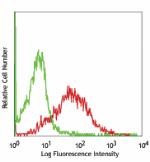
Con A-stimulated C57BL/6 splenocytes stained with purified R... -
LEAF™ Purified anti-mouse CD279 (PD-1)
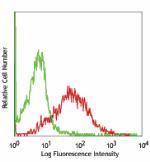
Con A-stimulated C57BL/6 splenocytes stained with LEAF™ puri... -
Ultra-LEAF™ Purified anti-mouse CD279 (PD-1)
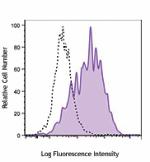
Con A-stimulated (3 days) C57BL/6 splenocytes were stained w... -
GoInVivo™ Purified anti-mouse CD279 (PD-1)
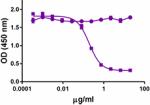
Anti-mouse PD-1 inhibits the binding of mouse PD-1 to PD-L1.... -
PE anti-mouse CD279 (PD-1)
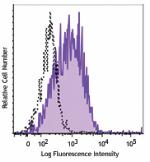
Con A-stimulated (3 days) C57BL/6 splenocytes were stained w...
 Login / Register
Login / Register 












Follow Us